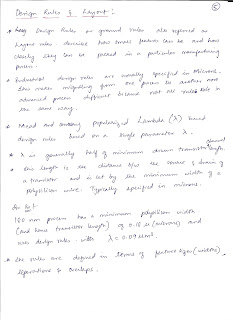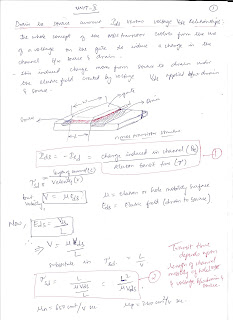VHDL Code:
library IEEE;
use IEEE.STD_LOGIC_1164.ALL;
use ieee.std_logic_unsigned.all;
entity sync_counter is
port(clk,rst,input: in std_logic;
q : out std_logic_vector(3 downto 0));
end sync_counter;
architecture Behavioral of sync_counter is
signal count : std_logic_vector(3 downto 0);
begin
process (clk,rst,input)
begin
if(rst='0') then
count<="0000";
elsif(clk'event and clk='1') then
if(input='1') then
count<=count + 1;
end if;
end if;
end process;
q<=count;
end Behavioral;
Simulated waveform:
XplorEngineering
Friday, 18 September 2015
Thursday, 17 September 2015
Asynchronus Down counter using T-Flipflops
VHDL Code:
entity down_counter is
port(input,clk,rst: in std_logic;
q: inout std_logic_vector(2 downto 0));
end down_counter;
architecture Behavioral of down_counter is
component t_ff is
port(clk,rst,t: in std_logic;
q,qbar: inout std_logic);
end component;
signal w1,w2,w3 : std_logic;
begin
x1: t_ff port map (clk=>clk,rst=>rst,t=>input,q=>q(0),qbar=>w1);
x2: t_ff port map (clk=>q(0),rst=>rst,t=>input,q=>q(1),qbar=>w2);
x3: t_ff port map (clk=>q(1),rst=>rst,t=>input,q=>q(2),qbar=>w3);
end Behavioral;
Note: add the T-flipflop source from the previous post.
entity down_counter is
port(input,clk,rst: in std_logic;
q: inout std_logic_vector(2 downto 0));
end down_counter;
architecture Behavioral of down_counter is
component t_ff is
port(clk,rst,t: in std_logic;
q,qbar: inout std_logic);
end component;
signal w1,w2,w3 : std_logic;
begin
x1: t_ff port map (clk=>clk,rst=>rst,t=>input,q=>q(0),qbar=>w1);
x2: t_ff port map (clk=>q(0),rst=>rst,t=>input,q=>q(1),qbar=>w2);
x3: t_ff port map (clk=>q(1),rst=>rst,t=>input,q=>q(2),qbar=>w3);
end Behavioral;
Note: add the T-flipflop source from the previous post.
Asynchronous Up counter using T- Flipflop
Three-bit counter capable of counting from 0 to 7. The clock inputs
of the three flip-flops are connected in cascade. The T input of each flip-flop is connected
to a constant 1, which means that the state of the flip-flop will be reversed (toggled) at each
positive edge of its clock. We are assuming that the purpose of this circuit is to count the
number of pulses that occur on the primary input called Clock. Thus the clock input of
the first flip-flop is connected to the Clock line. The other two flip-flops have their clock
inputs driven by the Q output of the preceding flip-flop. Therefore, they toggle their state
whenever the preceding flip-flop changes its state from Q = 1 to Q = 0, which results in a
positive edge of the Q signal.
of the three flip-flops are connected in cascade. The T input of each flip-flop is connected
to a constant 1, which means that the state of the flip-flop will be reversed (toggled) at each
positive edge of its clock. We are assuming that the purpose of this circuit is to count the
number of pulses that occur on the primary input called Clock. Thus the clock input of
the first flip-flop is connected to the Clock line. The other two flip-flops have their clock
inputs driven by the Q output of the preceding flip-flop. Therefore, they toggle their state
whenever the preceding flip-flop changes its state from Q = 1 to Q = 0, which results in a
positive edge of the Q signal.
VHDL Code:
entity up_counter is
port(input,clk,rst: in std_logic;
q: inout std_logic_vector(2 downto 0));
end up_counter;
architecture Behavioral of up_counter is
component t_ff is
port(clk,rst,t: in std_logic;
q,qbar: inout std_logic);
end component;
signal w1,w2,w3 : std_logic;
begin
x1: t_ff port map (clk=>clk,rst=>rst,t=>input,q=>q(0),qbar=>w1);
x2: t_ff port map (clk=>w1,rst=>rst,t=>input,q=>q(1),qbar=>w2);
x3: t_ff port map (clk=>w2,rst=>rst,t=>input,q=>q(2),qbar=>w3);
end Behavioral;
port(input,clk,rst: in std_logic;
q: inout std_logic_vector(2 downto 0));
end up_counter;
architecture Behavioral of up_counter is
component t_ff is
port(clk,rst,t: in std_logic;
q,qbar: inout std_logic);
end component;
signal w1,w2,w3 : std_logic;
begin
x1: t_ff port map (clk=>clk,rst=>rst,t=>input,q=>q(0),qbar=>w1);
x2: t_ff port map (clk=>w1,rst=>rst,t=>input,q=>q(1),qbar=>w2);
x3: t_ff port map (clk=>w2,rst=>rst,t=>input,q=>q(2),qbar=>w3);
end Behavioral;
Note: The T-Flipflop program is posted previously add that to the source.
T- Flipflop
The name T flip-flop derives from the behavior of the circuit, which “toggles” its state when T = 1. The toggle
feature makes the T flip-flop a useful element for building counter circuits.
VHDL Code
entity t_ff is
port(clk,rst,t: in std_logic;
q,qbar: inout std_logic);
end t_ff;
architecture Behavioral of t_ff is
begin
process(clk,rst,t)
begin
if(rst='0') then
q<='0';
elsif(clk'event and clk='1') then
if (t='0') then
q <= q;
else
q <= not q;
end if;
end if;
end process;
qbar<= not q;
end Behavioral;
feature makes the T flip-flop a useful element for building counter circuits.
VHDL Code
entity t_ff is
port(clk,rst,t: in std_logic;
q,qbar: inout std_logic);
end t_ff;
architecture Behavioral of t_ff is
begin
process(clk,rst,t)
begin
if(rst='0') then
q<='0';
elsif(clk'event and clk='1') then
if (t='0') then
q <= q;
else
q <= not q;
end if;
end if;
end process;
qbar<= not q;
end Behavioral;
Wednesday, 19 August 2015
Subscribe to:
Comments (Atom)
















































